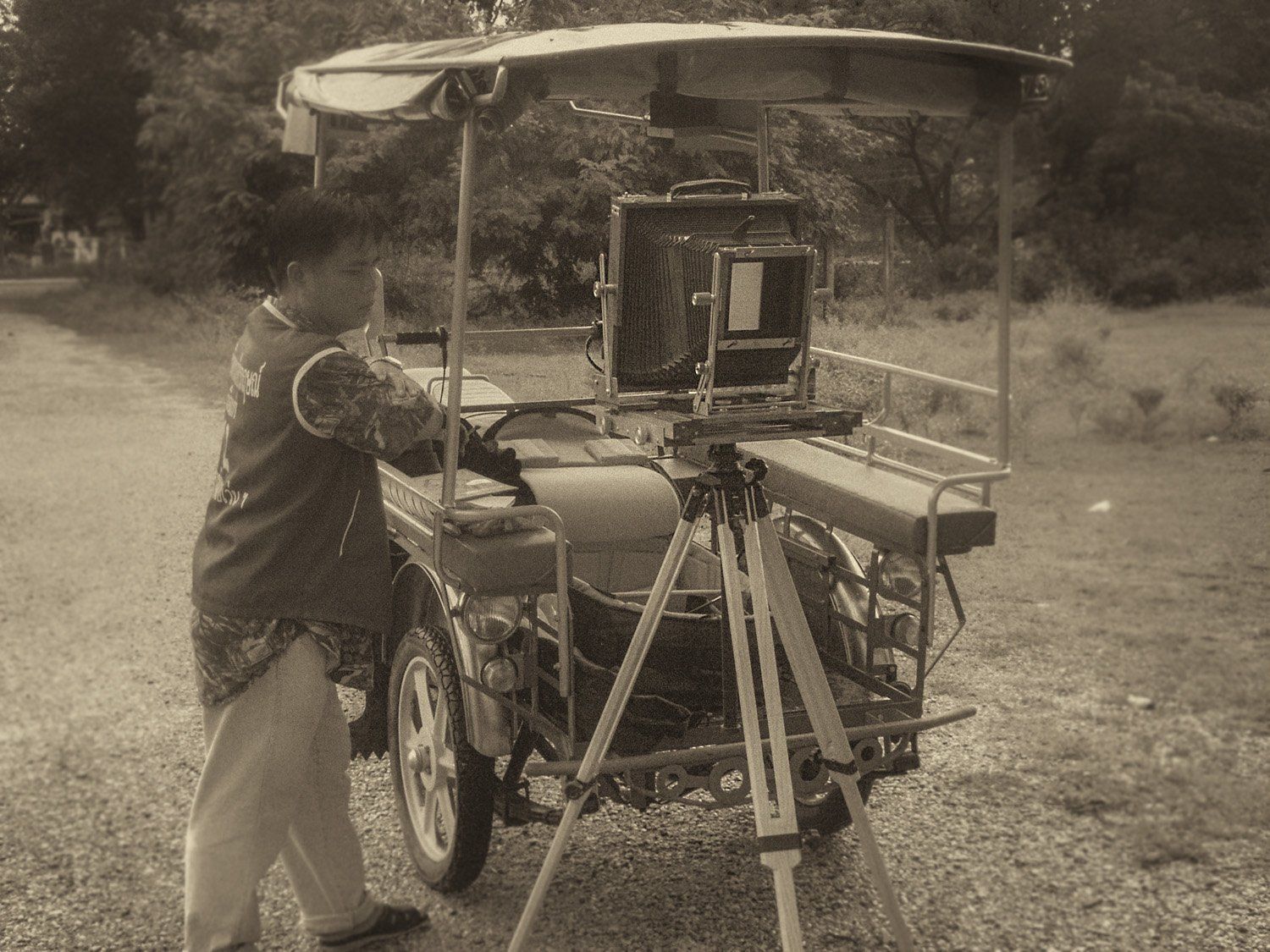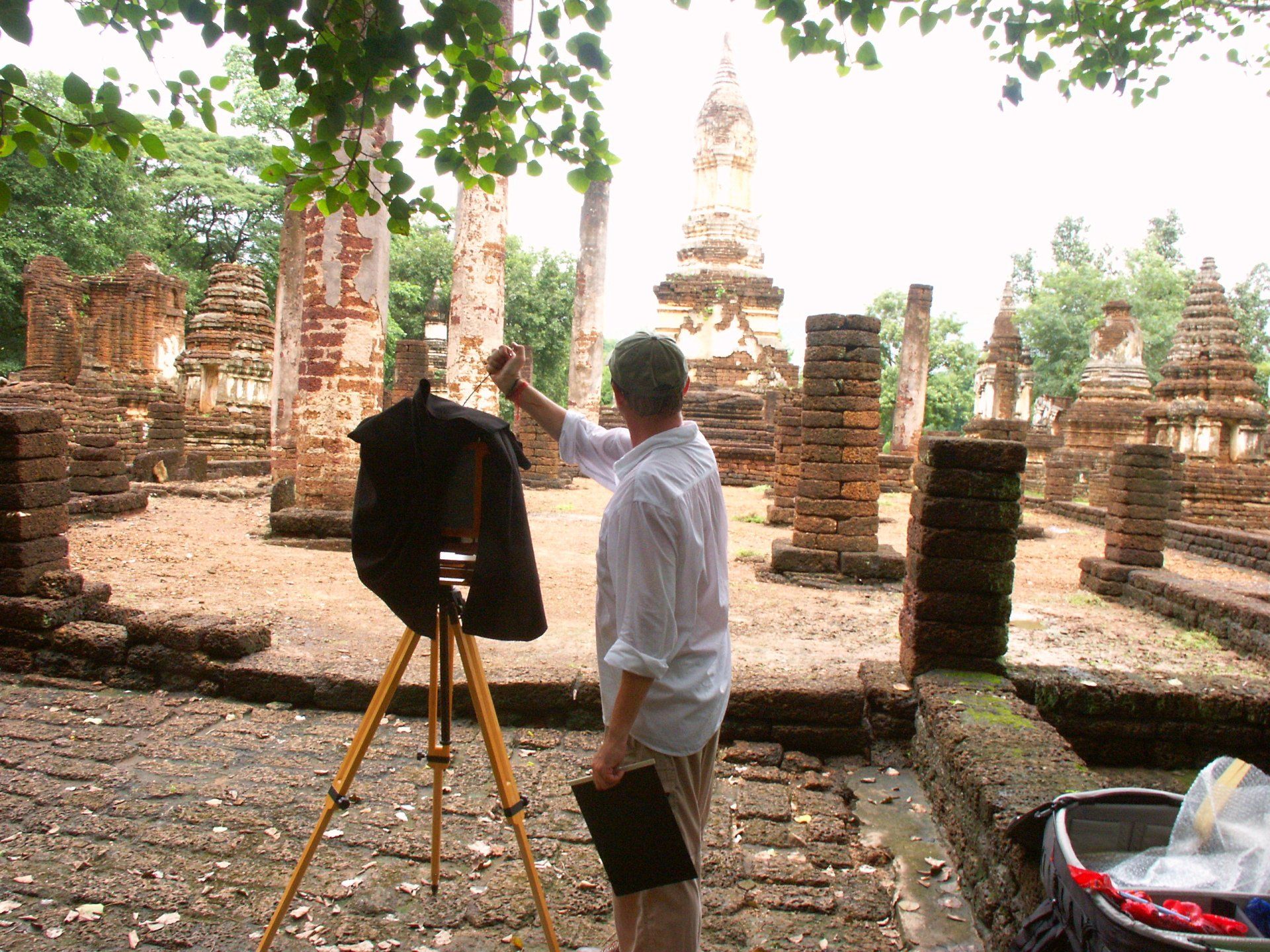Sukhothai
The Dawn of Happiness
Sukhothai was the capital of the Sukhothai Kingdom for one hundred and forty years beginning in 1238. While there are temples scattered around this part of Thailand, the Sukhothai Historical Park is where most of the architecture can be explored.
Gallery
Over the years the main city of Sukhothai, with Wat Mahathat at its center, has been manicured and planted with flowering hedges. It is more of a park setting than a site of temple ruins. For those seeking the romantic version or vision of ruins set in an original landscape, there are the mountain forest temples to the west such as Wat Saphan Hin and Wat Chedi Ngam. For an isolated and ruinous temple, go south of the old city walls to the 15th century Wat Chetuphon and its magnificent walking Buddha on a tall mandapa. What attracted me to this site was the intimacy of scale of these various temples. These sites recall the French expression, “un bon coin.” A small, beautiful out-of-the way place.
Field Notes
In 2001, I came to Sukhothai to photograph these ancient Buddhist temple complexes with only a vague notion of what they were about. In fact, I had only become aware of this place and something of its history a couple of months before I left Las Vegas on my journey to Asia. I thought photographing Sukhothai would give me an architectural counterpoint to what I expected to see in Bangkok, namely, the two magnificent temple complexes of Wat Arun and Wat Po. Those two 'wats' remain fully functional for Buddhist devotional practice, and are visited by hundreds of worshipers and tourists every day. Sukhothai, on the other hand, is a series of temples that has been archaeologically and architecturally restored as a UNESCO heritage site. The occasional pilgrim does find their way Sukhothai and you can see the evidence of their prayers and devotions left on the various platforms of seated or standing Buddhas. Mostly, however, Sukhothai attracts tourists, usually European or Chinese.
My favorite in spite of its small size, is Wat Chang Lom, which means ‘temple encircled by elephants.’ I first noticed this site as I looked out of the bathroom window of my hotel. Situated on the other side of a canal which bordered the back of the hotel, in a clearing of trees, was this wonderful small devotional place for the Buddha. It was an easy ride by bicycle to this little temple. It has a well proportioned chedi or stupa situated on a square base with elephants emerging from framed niches, surrounding the entire structure. Facing east, as most temples do, there is an assembly hall with a small platform upon which there once sat the Buddha Calling the Earth to Witness, a frequent mudra in Sukhothai Buddha images. Nearby are a couple of large bodhi trees, one of which rained red ants down upon me. Six visits to this region since my first, and there is much that remains for me to discover.
My favorite in spite of its small size, is Wat Chang Lom, which means ‘temple encircled by elephants.’ I first noticed this site as I looked out of the bathroom window of my hotel. Situated on the other side of a canal which bordered the back of the hotel, in a clearing of trees, was this wonderful small devotional place for the Buddha. It was an easy ride by bicycle to this little temple. It has a well proportioned chedi or stupa situated on a square base with elephants emerging from framed niches, surrounding the entire structure. Facing east, as most temples do, there is an assembly hall with a small platform upon which there once sat the Buddha Calling the Earth to Witness, a frequent mudra in Sukhothai Buddha images. Nearby are a couple of large bodhi trees, one of which rained red ants down upon me. Six visits to this region since my first, and there is much that remains for me to discover.













